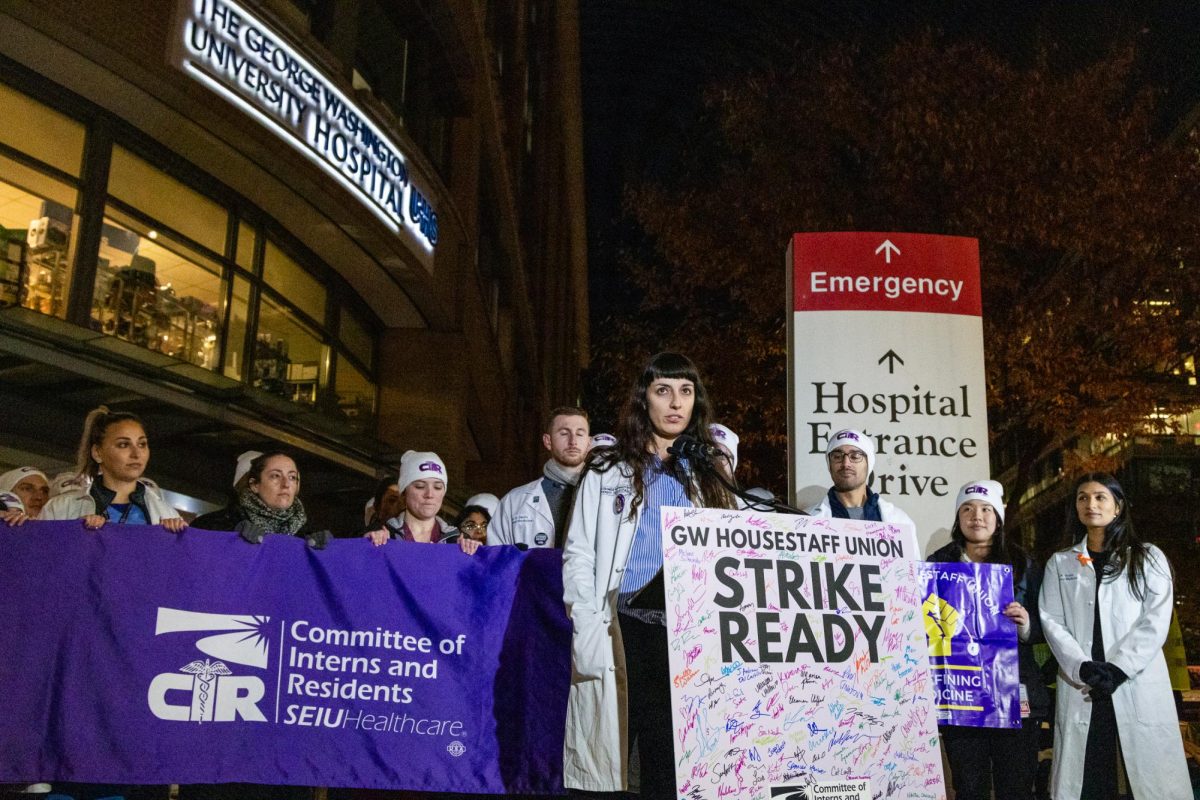
Updated: June 2, 2015 at 4:53 p.m.
One GW faculty member is credited with turning millions of dollars into a coveted piece of technology.
Akos Vertes, a professor of chemistry, has been researching at GW for more than 23 years and holds several patents. His latest project, the REDIchip, was funded with grants from the Department of Energy and a $14 million grant from the Defense Advanced Research Projects Agency. The chip examines small molecules in biofluids for dangerous materials. Protea Biosciences Group, based in West Virginia, licenses the technology from Vertes.
Vertes spoke with The Hatchet about his latest piece of technology, including how he created the REDIchip. This interview has been edited for length.
Hatchet: Tell me a little about your new technology.
Vertes: The idea is that in the analysis of very small amounts of biological material of environmental samples, there’s a great need to develop new techniques to lower and lower amounts of material that can be analyzed. So in order to produce ions, which is the basis of detections, we use a laser. And this is very common. People use lasers to produce ions from samples. Most of samples do not interact with the laser light — they just pass the light through.
So what we developed is a nanostructure made out of silicon using technologies that I used in microelectronics, the methods people use to manufacture computer chips. We used the same type of technology to develop a platform that does not require any external material so the sample remains pristine and unaltered. And as a result, we are able to detect a lot more of the molecules that are in the sample, a larger variety of the molecules, at much lower concentrations compared to the existing techniques. So this is in a nutshell what makes this new technology so attractive.
Hatchet: How will it be used in the field? When will a company need this technology?
Vertes: We have explored the use of this in detecting trace amounts of illicit drugs during samples for example, but practically anything that’s currently being analyzed in the liquid form can be analyzed by using with this technique. In addition to analyzing biofluids and other fluid samples, we’ve also explored using these platforms for chemical imaging. So we can take a tissue section, brain tissues or kidney tissues — and we have already tried this with mouse brain and mouse kidney — and we can put this section down on the surface of this microchip and then use the laser to interrogate the structure point by point just like forming pixels. From one experiment, we can form 100 to 200 different images and learn the distribution of different chemicals in in the brain, or in the kidney or any other organ we are sectioning.
Hatchet: How long have you been working on this project?
Vertes: Maybe I can give you a broader perspective. [Protea] has also licensed and commercialized another technology from my lab. We started working on both of these technologies back in 2006, 2007. So approximately by the time the [first] technology was commercialized, the [REDIchip] was about ready to be commercialized. We worked out many of the kinks, improving ion yields, making stable structures, making sure they don’t degrade over time, and so on. So then they licensed this one and started to commercialized it.
Hatchet: How did you go about licensing it to Protea labs?
Vertes: They showed up at my doorstep. The president of the company, Steve Turner, one day knocked on my door, and he said they were interested in our work. And I don’t know where he picked up on our work, but that was seven, eight years ago, and we have been working together ever since.
Do you have any other projects down the pipeline?
Vertes: We have of course more advanced versions of both technologies that are being considered for commercialization, and they don’t want to give out the details on those, but we already have ideas about the next generation.




